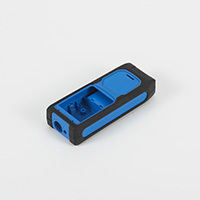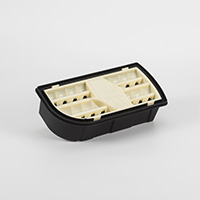Unlocking Material Synergy: The Versatility of Multilayer Injection Molding
 May 27, 2024|
May 27, 2024| View:116
View:116The world of plastic manufacturing has been revolutionized by the advent of multilayer injection molding. This innovative technique allows for the creation of complex, high-performance parts by combining multiple materials within a single molded component.
Unlike traditional single-layer injection molding, multilayer processes involve injecting two or more distinct plastic materials into a mold simultaneously or in rapid succession. This enables engineers to harness the unique properties of different polymers, tailoring the final product to meet a wide range of performance and aesthetic requirements.

At the core of multilayer injection molding is the ability to strategically position materials within the part. The innermost layer might consist of a strong, structural polymer, while the outer layers could incorporate soft-touch elastomers, colorful decorative films, or specialized barrier coatings. This layered construction unlocks a wealth of possibilities for design, functionality, and manufacturing efficiency.
Some of the key benefits of multilayer injection molding include:
Improved Mechanical Properties: By pairing materials with complementary strengths, such as rigidity and impact resistance, multilayer parts can achieve superior mechanical performance compared to single-material alternatives.

Enhanced Aesthetics: Multilayer molding enables the incorporation of decorative elements, like embedded logos or textured surfaces, without compromising the structural integrity of the part.
Integrated Functionality: Layers can be tailored to provide specialized features, such as enhanced chemical resistance, improved insulation, or integrated electronics.
Manufacturing Efficiency: Consolidating multiple components into a single multilayer part can simplify assembly, reduce part counts, and optimize production workflows.
As manufacturers continue to push the boundaries of plastic engineering, multilayer injection molding has emerged as a powerful tool for creating innovative, high-value products. By thoughtfully combining materials and leveraging the synergies between them, designers can unlock new levels of performance, functionality, and design freedom.

















